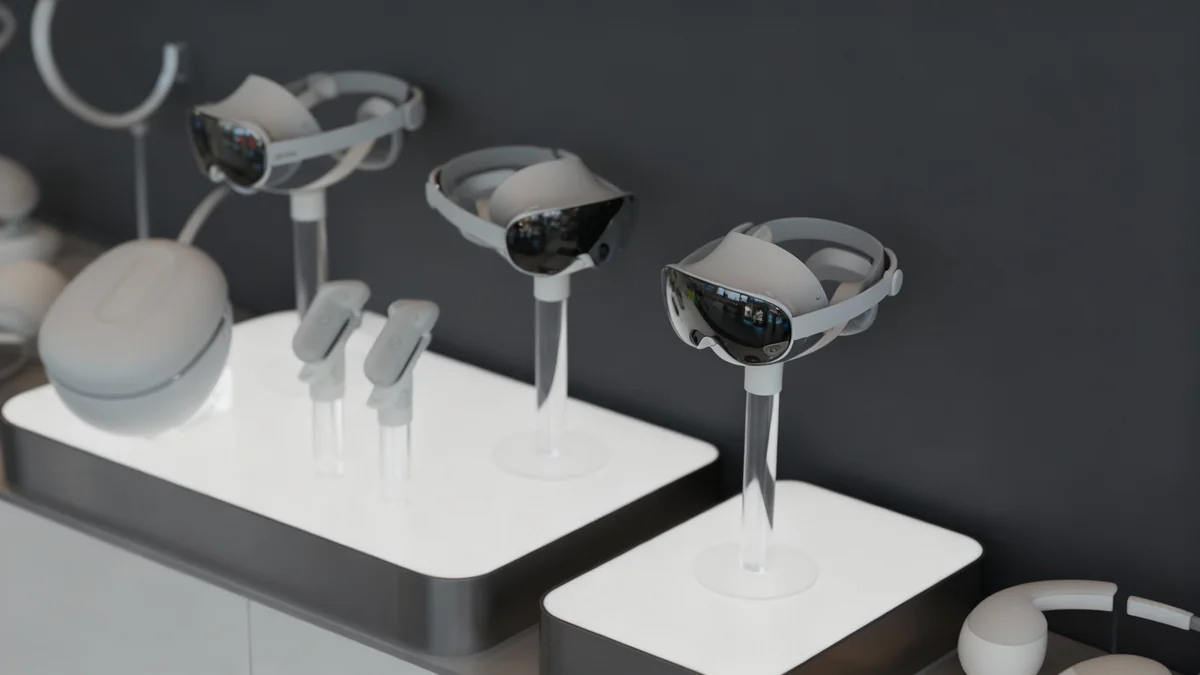Apple has officially announced its new M5 chip, marking a significant advancement in artificial intelligence (AI) performance for its silicon. This latest system-on-a-chip (SoC) delivers substantial improvements across its GPU, CPU, and Neural Engine, making it more powerful and efficient for AI-driven tasks. The M5 chip is set to power the new 14-inch MacBook Pro, iPad Pro, and Apple Vision Pro devices, which are now available for pre-order.
Key Takeaways
- M5 chip offers over 4x peak GPU compute performance for AI compared to M4.
- It features a next-generation 10-core GPU with a Neural Accelerator in each core.
- The CPU provides up to 15 percent faster multithreaded performance over M4.
- Unified memory bandwidth sees a nearly 30 percent increase to 153GB/s.
- M5 powers the new 14-inch MacBook Pro, iPad Pro, and Apple Vision Pro.
Next-Generation Architecture Drives AI and Graphics
The M5 chip is engineered using third-generation 3-nanometer technology. This advanced manufacturing process allows for a more integrated and powerful design. A core highlight is the new 10-core GPU architecture. This GPU includes a dedicated Neural Accelerator within each core.
This design choice significantly boosts the chip's ability to handle GPU-based AI workloads. Compared to the M4 chip, the M5 offers over 4x the peak GPU compute performance for AI. When compared to the M1 chip, this jump is even more pronounced, with over 6x peak GPU compute for AI performance.
Graphics capabilities also see major enhancements. The M5's GPU provides up to 45 percent higher graphics performance than the M4. This is due to enhanced shader cores and third-generation ray tracing technology. These improvements lead to more realistic visuals and smoother experiences in demanding applications.
“M5 ushers in the next big leap in AI performance for Apple silicon,” said Johny Srouji, Apple’s senior vice president of Hardware Technologies. “With the introduction of Neural Accelerators in the GPU, M5 delivers a huge boost to AI workloads. Combined with a big increase in graphics performance, the world’s fastest CPU core, a faster Neural Engine, and even higher unified memory bandwidth, M5 brings far more performance and capabilities to MacBook Pro, iPad Pro, and Apple Vision Pro.”
M5 GPU Performance Highlights
- AI Compute: Over 4x faster than M4, over 6x faster than M1.
- Graphics Performance: Up to 45% faster than M4.
- Ray Tracing: Third-generation engine for improved visual realism.
Powerful CPU and Faster Neural Engine
Beyond the GPU, the M5 chip incorporates a new 10-core CPU. This CPU features six efficiency cores and up to four performance cores. This configuration results in up to 15 percent faster multithreaded performance compared to the M4 chip. This speed increase benefits general computing tasks and complex professional applications.
The Neural Engine, central to Apple's on-device AI capabilities, has also been significantly upgraded. The M5 features an improved 16-core Neural Engine. This component works alongside the Neural Accelerators in the GPU to optimize the chip for various AI workloads. The faster Neural Engine allows AI-powered features, such as those found in Apple Vision Pro, to operate with greater speed and efficiency.
Impact on AI-Driven Workflows
With the M5, the new 14-inch MacBook Pro and iPad Pro will experience dramatically accelerated processing for AI-driven workflows. This includes tasks like running diffusion models in creative applications such as Draw Things, or executing large language models locally using platforms like webAI. Developers can leverage Apple's built-in frameworks and APIs, including Core ML, Metal Performance Shaders, and Metal 4, to build solutions that benefit from these performance gains.
Enhanced Memory for Demanding AI Tasks
Memory bandwidth is critical for high-performance computing and AI. The M5 chip boasts a unified memory bandwidth of 153GB/s. This represents a nearly 30 percent increase over the M4 and more than double the bandwidth of the M1 chip.
This unified memory architecture allows the entire chip to access a large, single pool of memory. This design enables devices like the MacBook Pro, iPad Pro, and Apple Vision Pro to run larger and more complex AI models entirely on the device. It also supports higher multithreaded performance in applications, faster graphics in creative software and games, and quicker AI processing.
With a memory capacity of up to 32GB, the M5 chip facilitates seamless multitasking. Users can run demanding creative applications such as Adobe Photoshop and Final Cut Pro simultaneously while performing background tasks like uploading large files to cloud services.
Memory and AI Model Capabilities
The increased unified memory bandwidth and capacity allow M5-powered devices to handle larger AI models directly on the device. This improves performance for Apple Intelligence features, such as Image Playground, and enhances the overall efficiency of Apple Intelligence models. Developers using Apple’s Foundation Models framework will also see faster performance.
M5 Powers Apple's Latest Devices
The M5 chip brings its industry-leading power-efficient performance to Apple's newest hardware. The 14-inch MacBook Pro, iPad Pro, and Apple Vision Pro are all equipped with the M5, allowing each device to deliver advanced capabilities specific to its form factor and user experience.
For example, the Apple Vision Pro benefits from the M5's graphics capabilities by rendering 10 percent more pixels on its micro-OLED displays. Refresh rates also increase up to 120Hz. This results in crisper details, more fluid display performance, and reduced motion blur, enhancing the immersive experience.
The M5's advanced GPU architecture, with its enhanced shader cores, second-generation dynamic caching, and third-generation ray-tracing engine, improves visual realism and rendering times. This is particularly noticeable in graphically intensive applications and games such as Cyberpunk 2077.
Apple's Commitment to Sustainability
Apple's M5 chip also aligns with the company's environmental goals. The power-efficient performance of the M5 helps the new 14-inch MacBook Pro, iPad Pro, and Apple Vision Pro meet Apple’s high standards for energy efficiency. This design choice aims to reduce the total energy consumed over the lifetime of these products.
The company's broader initiative, Apple 2030, aims for carbon neutrality across its entire footprint by the end of this decade. This plan focuses on reducing product emissions from three primary sources: materials, electricity, and transportation. The M5 chip's efficient design contributes to these overall sustainability efforts.





